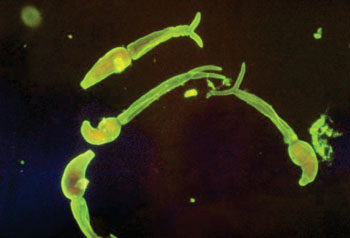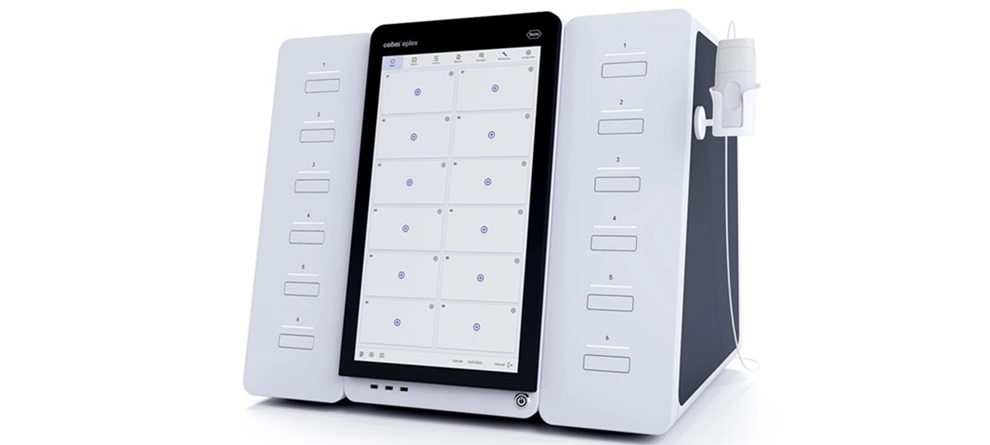Immunological Tests Detects Schistosomiasis in Low-Endemicity Area
By LabMedica International staff writers
Posted on 02 Apr 2014
The prevalence of Schistosoma mansoni infection has been systematically determined using the indirect immunofluorescence assay-immunoglobulin M (IFA-IgM) and circumoval precipitin test (COPT) techniques with serum samples.Posted on 02 Apr 2014
Schistosomiasis is a major public health problem, with an estimated 200 million people infected worldwide and as a consequence of effective schistosomiasis control programs based on mass or selective chemotherapy, basic sanitation measures, and use of molluscicides, the prevalence of human schistosomiasis has decreased considerably.

Image: Cercariae of Schistosoma mansoni stained by indirect fluorescent antibody (Photo courtesy of Dr. Alexander Sulzer).
Parasitologists from the University of São Paulo (Brazil) conducted a cross-sectional study was from April to December 2011 in several districts on the outskirts of Barra Mansa, Rio de Janeiro, Brazil and collected 572 randomized feces and serum samples. The majority of subjects in the study population were females. The average age of the population was 40 to 41 years old.
Fecal samples were processed and evaluated using the qualitative-quantitative Helm Test Kit (KK-HH, Biomanguinhos Fiocruz; Rio de Janeiro, Brazil). The COPT was used to detect antibody reactions against excretion and secretion products of S. mansoni eggs using previously described techniques. The IFA-IgM reading was performed using an Olympus BX-FLA fluorescence microscope (Olympus Corporation, Tokyo, Japan) equipped with an epi-illumination system.
The IFA-IgM identified the greatest number of S. mansoni infections (91/572, 15.9%), followed by COPT (29/572, 5.1%). The Helm test kit parasitological techniques identified the fewest infections (5/572, 0.9%). The COPT positivity showed a statistically significant difference compared with parasitological techniques. The level of agreement between COPT and parasitological techniques was higher than that with IFA-IgM. The higher COPT positivity compared with parasitological techniques may be caused by oviposition occurrence, where eggs deposited in the deepest layers of the intestine can be detected even in the absence of eggs in feces, especially in chronic infections in patients over 40 years of age and with low parasite load.
The authors concluded that positivity rates were highest using IFA-IgM compared with parasitological techniques and COPT. Therefore, it could be used as a primary approach to screen a large number of suspected cases of schistosomal infection in epidemiological studies, in combination with the KK-HH techniques and confirmation of IFA-IgM-positive cases with COPT techniques would be beneficial in low-endemicity areas. The study was published on March 17, 2014, in the American Journal of Tropical Medicine and Hygiene.
Related Links:
University of São Paulo
Biomanguinhos
Olympus Corporation













